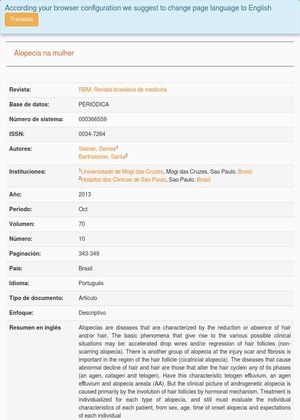Alopecia in Women
January 2013
in “
Revista brasileira de medicina
”

TLDR The study concluded that hair loss treatments should be tailored to the specific type of alopecia and individual patient needs.
The 2013 study "Alopecia na mulher" by Sarita Bartholomei discussed the different types of alopecia, a condition characterized by hair loss or absence. The study identified two main groups: non-scarring alopecia, which involves accelerated hair loss and/or regression of hair follicles, and cicatricial alopecia, where scar and fibrosis occur in the hair follicle region. Diseases that alter the hair cycle in any of its phases (anagen, catagen, and telogen) can cause abnormal hair loss. These include telogen effluvium, anagen effluvium, and alopecia areata (AA). Androgenetic alopecia, on the other hand, is primarily caused by the involution of hair follicles due to hormonal mechanisms. The study concluded that treatment should be individualized for each type of alopecia, taking into account individual patient characteristics such as sex, age, duration of alopecia, and patient expectations.